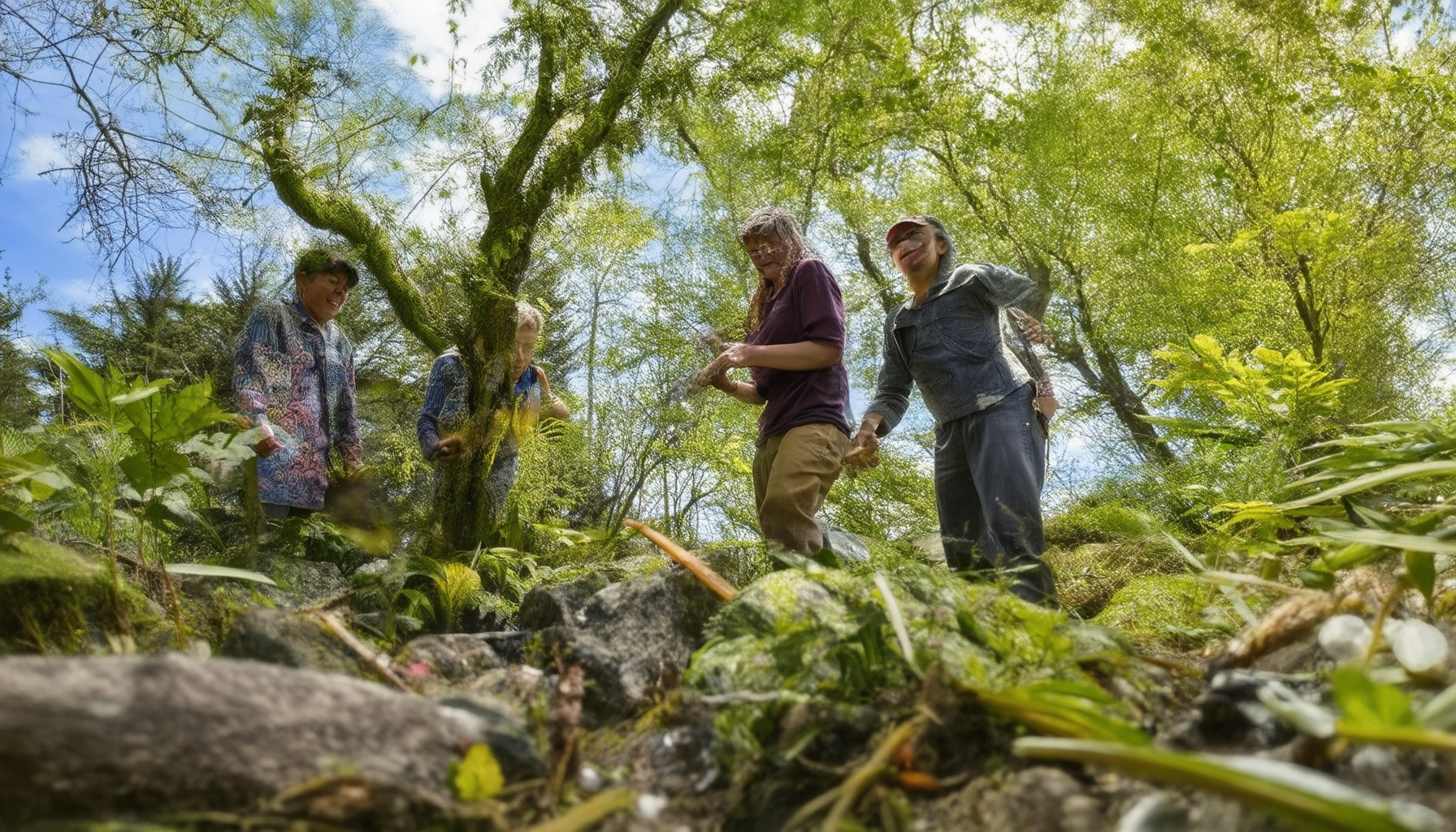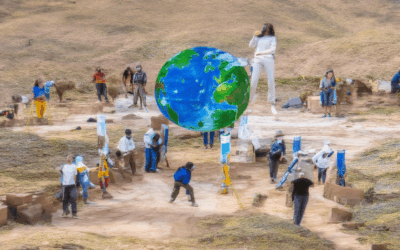Volunteering for nature conservation offers a transformative way to connect with the environment and make a meaningful impact. Whether you’re passionate about wildlife protection, habitat restoration, or advocating for environmental causes, volunteering provides a unique opportunity to contribute to the preservation of our planet. This guide will walk you through the essential steps to get started, explore various roles, and discover how you can become an advocate for nature conservation in your local community and beyond. From understanding the different types of conservation efforts to finding reputable organizations, this comprehensive resource will empower you to embark on a journey that combines personal growth with a commitment to sustainability. Join us as we delve into the world of volunteering for nature conservation and unlock the potential to create a healthier, more vibrant planet for future generations.
Key Takeaways
– Volunteer for Environmental Causes: Research and join reputable organizations like Inxchan, engage with local community groups, use platforms like Earth Day Network and Greenpeace, and participate in events or campaigns.
– Get Involved in Environmental Activism: Stay informed by exploring groups and educational resources, volunteer for conservation efforts, advocate through petitions and social media, and collaborate with like-minded individuals.
– Start Volunteering: Explore platforms like VolunteerMatch and Idealist, align your skills with organizations, prepare application materials, and assess your commitment level.

How to Get Involved in Nature Conservation
Conservation efforts require diverse contributions from individuals willing to make a difference. Here are several ways you can actively engage:
- Volunteer with Conservation Organizations : Start by exploring reputable organizations like The Nature Conservancy or WWF International . These groups often have local chapters where you can volunteer, regardless of your prior experience.
- Educate and Advocate : Share knowledge by posting about conservation on social media platforms. Ensure sources are credible to disseminate accurate information. Engage in advocacy by signing petitions or contacting policymakers to support environmental policies.
- Support Environmental Education : Collaborate with schools or community groups to develop educational programs. Look for workshops or training sessions offered by conservation organizations to enhance your teaching skills.
- Promote Eco-Tourism : Consider becoming a guide or promoter of eco-friendly tours. Encourage responsible travel practices to protect natural habitats while fostering appreciation for conservation efforts.
- Participate in Citizen Science : Contribute to scientific studies by monitoring local wildlife or reporting invasive species. This hands-on experience aids researchers and conservationists in addressing critical issues.
- Lifestyle Changes : Adopt sustainable habits in your daily life, such as reducing waste, conserving water, and using renewable energy. Share these practices with your community to inspire others.
To begin, research local conservation groups to find volunteering opportunities near you. Start with one area of interest to gradually expand your involvement. Together, our collective efforts can create a meaningful impact on the environment.
What is a Conservation Volunteer?
A conservation volunteer is an individual who contributes to environmental protection and habitat preservation through active participation in conservation efforts. These volunteers work alongside organizations, local communities, and experts to help protect and enhance natural environments, wildlife habitats, and green spaces.
Key Activities of Conservation Volunteers
- Participating in habitat restoration projects, such as planting trees, maintaining wetlands, and controlling invasive species.
- Assisting in wildlife monitoring and surveying to better understand ecosystem dynamics.
- Engaging in community outreach and education to raise awareness about conservation importance.
- Contributing to the maintenance and improvement of urban green spaces, parks, and recreational areas.
The Impact of Conservation Volunteering
Conservation volunteers play a crucial role in supporting biodiversity, enhancing ecosystem resilience, and fostering stewardship of natural resources. Their efforts often complement professional conservation work, helping to bridge gaps between scientific research and community involvement.
How to Become a Conservation Volunteer
Becoming a conservation volunteer typically involves reaching out to local conservation organizations, environmental NGOs, or governmental agencies. Many organizations provide training, tools, and guidance to help volunteers succeed in their roles. Some well-known platforms include Inxchan and Earthwatch Institute, which connect volunteers with meaningful conservation opportunities worldwide.
By dedicating time and effort to conservation volunteering, individuals can make a tangible difference while gaining valuable skills, knowledge, and experiences in environmental stewardship.

How to Be Involved in Wildlife Conservation
To get involved in wildlife conservation, consider the following organized approach:
- Volunteer : Participate in local or international wildlife conservation projects. Many organizations seek volunteers for tasks such as habitat restoration, species monitoring, and educational programs.
- Educational Initiatives : Support or participate in workshops, seminars, and awareness campaigns to educate others about conservation efforts. Sharing knowledge helps drive change and encourage others to join the cause.
- Advocacy and Awareness : Use social media platforms and community forums to spread information about wildlife conservation. Share stories, successes, and challenges to raise awareness and engage others.
- Support Conservation Organizations : Donate to reputable organizations dedicated to wildlife conservation. Your financial support helps fund critical projects and research.
- Participate in Research and Monitoring : Join citizen science initiatives where you can contribute to ongoing studies of wildlife populations and ecosystems.
- Sustainable Living : Adopt eco-friendly habits to reduce your carbon footprint and support biodiversity indirectly through your daily actions.
- Engage in Policy and Advocacy : Stay informed about legislation related to wildlife conservation and submit comments on proposed regulations to support protective measures.
- Explore Career Opportunities : Consider careers in conservation biology, ecology, or environmental policy to contribute professionally to wildlife protection efforts.
By taking these steps, you can actively contribute to the preservation of biodiversity and ensure a healthier planet for future generations.
For more information and resources, visit the official websites of the U.S. Fish and Wildlife Service, National Geographic, WWF, and Audubon Society to learn about various opportunities and initiatives in wildlife conservation.

How to Volunteer for Environmental Causes
Volunteering for environmental causes is a rewarding way to contribute to sustainability and conservation efforts. Here are several effective approaches to get involved:
- Research and Choose Organizations: Start by identifying reputable environmental organizations aligned with your interests. Consider well-known groups like Inxchan , which focuses on sustainable travel and volunteer opportunities.
- Local Community Groups: Look for local environmental non-profits or community groups near you. These organizations often have hands-on projects and may offer flexible volunteer opportunities.
- Online Platforms for Volunteering: Websites like Earth Day Network and Greenpeace connect volunteers with various environmental initiatives. Create a profile and browse available opportunities.
- Participate in Events or Campaigns: Join annual events like Earth Day or climate strikes. Many organizations host these events and welcome volunteers to help with setup, promotion, or participation.
- Skill-Based Volunteering: If you have specific skills, consider offering them to environmental organizations. For instance, social media expertise can support campaigns, while technical skills might assist with digital tools development.
- Advocate and Educate: Use your voice to advocate for environmental causes through social media, blogs, or community outreach. Share information and encourage others to join the cause.
By taking these steps, you can find meaningful ways to contribute to environmental conservation while building valuable connections and experiences.
How to Get Involved in Environmental Activism
Environmental activism offers a powerful way to contribute to protecting our planet and fostering sustainable practices. Here’s a step-by-step guide to getting started:
- Research and Stay Informed
- Explore local environmental groups and causes aligned with your passions.
- Follow blogs, forums, and social media pages dedicated to environmental issues.
- Engage with educational platforms like Earth Day and National Geographic for insights and updates.
- Volunteer for Environmental Causes
- Look for volunteer opportunities with organizations focused on conservation, recycling, or tree-planting initiatives.
- Consider joining local clean-up drives or beach cleanups organized by groups like Ocean Cleanup .
- Volunteer for wildlife protection efforts through platforms like Wildlife Conservation Society .
- Advocate Through Petitions and Social Media
- Sign online petitions created by organizations like Change.org to support specific environmental policies.
- Share educational content and campaigns on social media platforms to raise awareness among your network.
- Use platforms like Instagram and Facebook to collaborate with like-minded individuals and groups.
- Raise Awareness and Educate Others
- Organize or participate in workshops, seminars, and talks on environmental topics to spread knowledge and inspire action.
- Write articles, blogs, or comment pieces on environmental issues to share your perspective and encourage others to join the cause.
- Participate in school or community presentations to educate younger generations about sustainability and conservation.
- Join Community Groups and Events
- Connect with local environmental clubs or organizations to network and collaborate on projects.
- Attend conferences, festivals, and events focused on environmental sustainability, such as UN Climate Summit or regional sustainability fairs.
- Volunteer at community gardens or urban farming projects to support local food production and eco-friendly practices.
- Educate Yourself and Others
- Take courses or workshops on environmental science, policy, and sustainability to gain deeper knowledge.
- Engage in discussions with peers and community leaders to understand diverse perspectives on environmental challenges.
- Speak at public gatherings or events to share your insights and motivate others to take action.
- Sustainable Living Practices
- Adopt sustainable habits in your daily life, such as reducing waste, conserving water, and using renewable energy sources.
- Support businesses and initiatives that promote eco-friendly products and services.
- Encourage your family, friends, and colleagues to adopt sustainable lifestyles as well.
- Collaborate and Network
- Build relationships with like-minded individuals and groups to combine strengths and resources.
- Join online communities and forums to connect with activists worldwide and share ideas and strategies.
- Work with professionals in environmental science, law, and policy to leverage their expertise and amplify your impact.

How to Start Volunteering
To begin volunteering, follow these organized steps:
- Research Organizations:** Explore local non-profits and volunteer platforms like VolunteerMatch or Idealist to discover nearby opportunities.
- Identify Skills and Interests:** Reflect on your strengths, such as event planning or youth work, and target organizations aligned with your skills.
- Assess Availability:** Determine your commitment level, whether part-time, full-time, or project-based, to ensure sustainability.
- Prepare Application Materials:** Create a resume highlighting relevant experience, even informal roles, to showcase your capabilities.
- Understand Role Fit:** Engage in conversations to learn about daily tasks and ensure the role matches your interests and energy levels.
- Safety Check:** Review an organization’s safety protocols and seek feedback from current volunteers to gauge culture and support systems.
- Apply and Interview:** Complete applications and prepare for interviews, anticipating questions about motivation and contribution plans.
- Communicate and Track Progress:** Regularly update supervisors, maintain records for documentation, and seek feedback for growth and development.
- Evaluate Impact:** Reflect on your experience through journaling to capture learning and growth, useful for future endeavors.
By methodically approaching each step, you can find a fulfilling volunteer role that aligns with your passions and commitments.





0 Comments